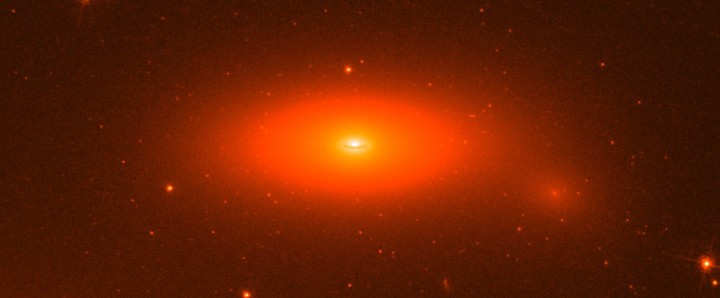
This newly found and the record-breaking black hole is heavier than 17 billions of our suns. It is the largest black hole ever discovered and if this doesn’t make it interesting enough, it resides in the middle of an unusually small galaxy.
Science now indicates that certainly most, perhaps all, galaxies do harbor a black hole at its center and the black hole NGC 1277 is no exception. The black hole in its center amounts to more than half of all the mass in the galaxy’s central area.
As a comparison to the black hole found in our own galaxy, the Milky Way, this hole is only about a tenth of the galaxy’s center mass. The NGC 1277 galaxy is thus breaking the rule that the larger the galaxy the greater the black hole. But with so many galaxies out there, and so few analyzed, we do not know yet if this is indeed a unique feature in the universe or not, this remains to be discovered.
The small galaxy NGC 1277 lies in the constellation Perseus, about 230 million light-years away from us. Very far away indeed, even in astronomical references. NGC 1277 is very old and new stars stopped forming about 8 billion years ago.
Team member Karl Gebhardt of the University of Texas at Austin said in a statement; “This is a really oddball galaxy,” “It’s almost all black hole. This could be the first object in a new class of galaxy-black hole systems.”.
______________
http://www.utexas.edu/news/2012/11/28/astronomers-measure-most-massive-most-unusual-black-hole-using-hobby-eberly-telescope/
____________________________











![OpenAI. (2025). ChatGPT [Large language model]. https://chatgpt.com](https://www.illustratedcuriosity.com/files/media/55136/b1b0b614-5b72-486c-901d-ff244549d67a-350x260.webp)
![OpenAI. (2025). ChatGPT [Large language model]. https://chatgpt.com](https://www.illustratedcuriosity.com/files/media/55124/79bc18fa-f616-4951-856f-cc724ad5d497-350x260.webp)
![OpenAI. (2025). ChatGPT [Large language model]. https://chatgpt.com](https://www.illustratedcuriosity.com/files/media/55099/2638a982-b4de-4913-8a1c-1479df352bf3-350x260.webp)








